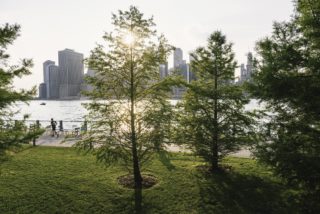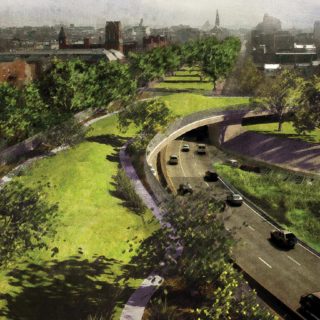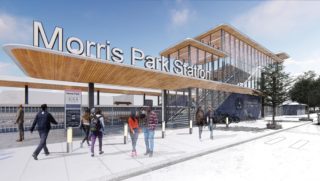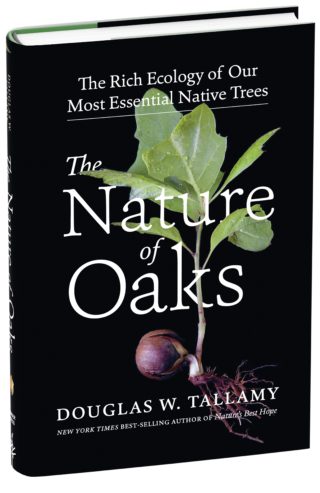In a few short weeks this past December, construction crews worked round the clock and through the weekend to demolish the southern half of Manhattan’s East River Park. They tore up the riverfront esplanade and obliterated the dance circle and its grove of flowering cherry trees. Ballfields and tennis courts were decimated, all in execution of the East Side Coastal Resiliency (ESCR) project, the city’s contentious $1.45 billion flood protection plan to bury the park under eight feet of landfill.
As one of the community members opposing ESCR, I supported the original BIG U that came out of the Rebuild By Design program, a less costly plan that featured an undulating berm, did not call for the destruction of 991 mature trees, and incorporated a sewer and drainage system. We knew time was running out, but we did not know the city would defy a restraining order issued by the New York State Court of Appeals to stop work. We did not know how gutted we would feel to witness the destruction.
The trees and the natural flood protection they offer are gone. The homes they provided for the park’s animals and birds are gone. Gone, too, with the razing of the historic East River Park Amphitheater, is an irreplaceable public space that met so many of the community’s needs. Since 1941, the 2,500-seat amphi-theater functioned like the agora in an ancient Greek city, a place to gather, dream, and create, constantly repurposed and reimagined throughout its history.
The original home of Shakespeare in the Park, the structure was widely used for philharmonic concerts, plays, school pageants, and graduations. A review of a 1964 performance of the Orchestra of America in the New York Times describes the idyllic setting: “a shell-like structure, almost backed into the East River, surrounded by slender trees waving in the cool breeze.”
The New York City Department of Parks & Recreation records the amphitheater as falling into disrepair by the 1970s and ’80s, but I would argue it had never looked lovelier. Watch Wild Style, Charlie Ahearn’s 1983 hip-hop film, and there is graffiti legend Lee Quiñones covering the scruffy blank slab with a wrap-around, pavement-to-sky mural that explodes stars and lightning into the night. Following the 9/11 attacks in 2001, the amphitheater was renovated as part of ABC’s Challenge America, receiving a pro-bono facelift from Tishman Construction and HLW Architects and its now-iconic Sputnik shoe-horn shape. I’ve also heard it described as a “metal rainbow.”
The city began hosting Summer Stage there, but it was the community that transformed the amphitheater into a potent, powerful space. In the joyful spirit of Wild Style, the amphitheater was daily, nightly, hourly MacGyvered by whomever felt so inspired: art shows, dance performances, community meetings, groups of friends, the Tompkins Square Halloween dog parade, and dance parties hosted by residents of the NYC Housing Authority communities, who’d haul their DJ equipment across the street.
The amphitheater accommodated skaters, tai chi practitioners, and fitness buddies running the steps together. Yet it was not uncommon to find yourself alone there, watching the sun rise with the park’s resident hawk or a troupe of squirrels. It served a crucial role during the early days of the pandemic, a respite for local residents when there was literally nowhere else to go.
Combing through hashtags on social media and local blogs, I find scattered reports and homages:
A group of folk dancers met there regularly. Real culture happens here.
Got my first splinter here.
My daughter learned to walk climbing these steps.
Is there any other building or green space in New York City with so many unintended uses, with so many meanings? A public space that is, that was, adaptable, inclusive, edgy. River’s edgy.
The tofu of constructions, the amphitheater served as a blank canvas, an empty space ready to accept any flavor brought to it.
September 11, 2021, was one of the last times I attended a community event at the amphitheater. Organizers of “1,000 People for 1,000 Trees” welcomed each attendee with these instructions:
SEEK A TREE—STAND by your tree. Embrace it, take a picture, make a commitment to protect all the trees moving forward.
My tree stood on the backside of the amphitheater closest to the river, and I noticed a silver tag, “550,” screwed into the trunk. I knew this meant it was scheduled for destruction, but I didn’t think something so obviously there could never not be. I counted three pigeons, a yellow butterfly, and five runners on the esplanade before I sang to the tree for 18 minutes. I wondered if this tree liked watching the Macy’s fireworks, and whether there would come a time when it would ever, as hurt trees do, send out the same electrical signals that wounded human flesh does.
I remember walking over the footbridge back to Corlears Hook with a small group of activists, and was surprised that I never knew the amphitheater was at the intersection of Jackson and Cherry streets, that an actual city existed beyond the park. I always entered that space as if it were another dimension, a magical, liminal space where anything was possible.
The city has stated that ESCR will be completed by 2026, but with an ongoing pandemic and potential supply and worker shortages, that seems unlikely. What will happen now that half of the park, so important for mental and physical well-being to neighborhood residents, is no longer accessible? What will happen with fewer trees to absorb emissions from the FDR Drive in an area of the city with high asthma rates?
It is not clear when the northern end of the park will be demolished, or when the city will build a new amphitheater. According to a digital rendering shared by the NYC Department of Design and Construction, its proposed iteration is small, flat, and nook- and cranny-less. A concrete dinnerplate with considerably less seating. Where to hang the art?
Like the 80-year-old trees that were reduced to mulch, the heart of the amphitheater cannot be replaced. In a time when democracy is being questioned, it is no small thing to liken this space and all it provided to an agora: a word that means the physical setting and the people in it, a word meaning the center of a city’s athletic, artistic, commercial, social, spiritual, and political lives. In the case of the amphitheater, you can knock out the commercial part because it sat on free public space.
Park defenders are heartbroken, angry at a city that allows for the destruction of trees at such a grave time for the planet. Yet they continue to meet daily at 1 p.m., committed to saving what is left. This community gathering is held at the fence demarking where the park is closed off, just north of Houston Street. What if—when community members act together with a shared purpose—we are constructing an environment that is both built and movable? What if the community gathering and all who attend comprise the new amphitheater? An agora in sneakers, a convening on wheels, the fence now our stage, the news of the day taped there on poster board and marker:
NOT ONE MORE TREE. WTF.
We will not give up!
Ecocide on overtime.
Another world is possible.
This is what it is for now.












